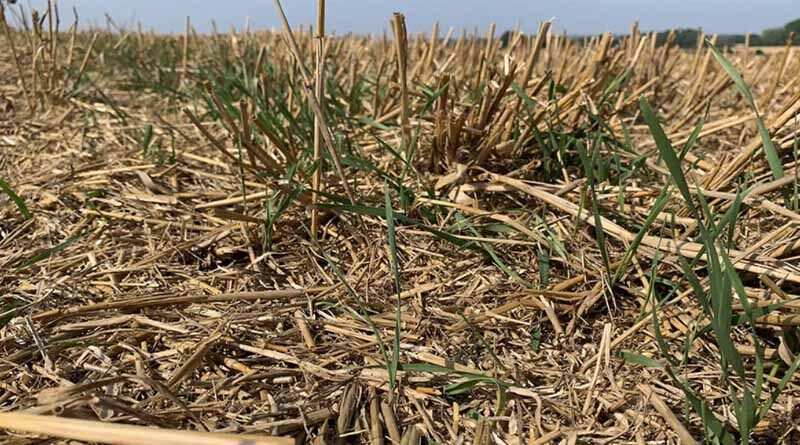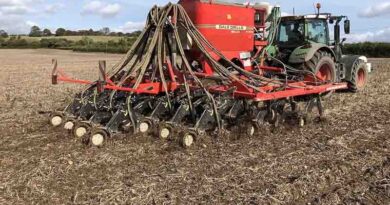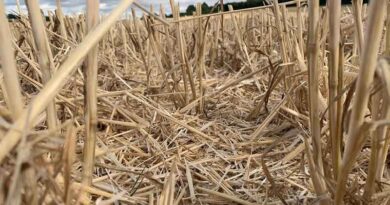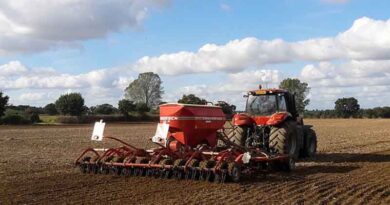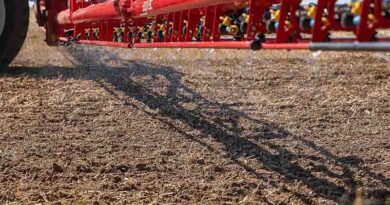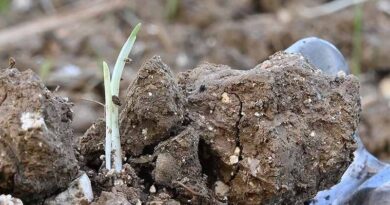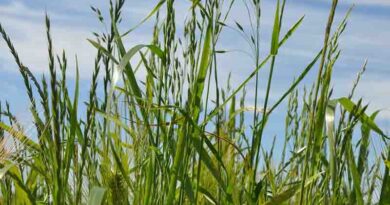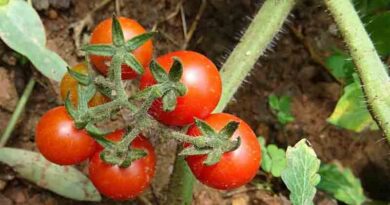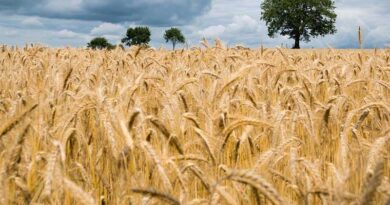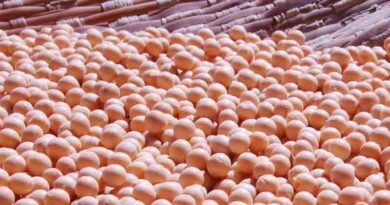Fresh approach to stale seedbeds
07 September 2021, UK: Stale seedbeds could play a hugely important role in overall grassweed control strategies this season. With good soil moisture levels, growers should look to positively manage stubbles to encourage more weeds to chit, advocates Syngenta grass weed specialist, Georgina Wood.
Trials at the company’s Black-grass Innovation Centre, in Barton, Cambridgeshire, have shown effective results from a light stubble cultivation post-harvest to encourage soil contact with shed seed. But she warns against burying seed too deeply as that could delay emergence.
“Unless you’re intending to plough, it’s important to keep newly shed seed, at or very close to, the surface,” she advised.
“Research has shown seed that is buried just four to six cm deep can take up to two weeks to emerge, and that the percentage of seed that emerges from below six cm falls off dramatically.”
Also Read: Amazon announces launch of Kisan Store in India
“Understanding where any seed may be sitting in the soil profile, from this season’s weeds or previous years’ cropping, can help to calculate the period of potential grassweed emergence and develop more effective strategies,” she advised.
The speed of black-grass emergence will also be influenced by the primary dormancy of the freshly shed seed. Previous ADAS studies have suggested that the cool, dull conditions experienced at the time of black-grass seed set earlier this season, would indicate relatively high dormancy – resulting in protracted weed germination in the seedbed.
“Where dormancy or other conditions slow grassweed emergence, growers will need to remain patient before weed destruction prior to crop establishment, to get the best possible effects,” she urged.
Georgina advocated growers and agronomists rate fields according to their weed burden or historical herbicide control issues, in order to focus on the more challenging situations with a fully integrated approach.
“Delay drilling overall, and leave those fields with the highest populations until last for drilling to maximise the stale seedbed,” she advised.
With autumn herbicide applications after a later drill timing, she reported the emphasis should be firmly on the pre-emergence timing – for both efficacy of agronomy options and the importance of having control in place if adverse weather conditions prevent further applications.
“Trials have consistently shown that application of the pre-emergence herbicide mix within 48-hours of drilling delivers the most reliable results,” she added.
Spray windows and suitable soil conditions for peri- or post-emergence applications have been increasingly limited over recent seasons.
The pre-emergence application is also the safest timing for use of larger stacks of multiple active ingredients and higher rates of application, which has consistently given the most effective control of black-grass, highlighted Georgina.
She cited a series of over 25 trials across six seasons, which showed average control with combinations of just two actives averaged 58% control, compared to 72% with three actives, 80% from four or more than 92% where five actives were combined in a tank-mix.
Results of this year’s Defy trials at various sites across the country have also shown that its inclusion with newer chemistry available on the market can further boost overall performance of pre-emergence mixes. Used in mix with metribuzin, at its post-September application rate of 0.5 l/ha, along with flufenacet + diflufenican, Defy gave an additional 10% black-grass control. With aclonifen mixes, for example, Defy gave a further 8% increase in overall control.
“That’s crucially important in an integrated strategy combining herbicides and cultural controls, towards the aim of 97% reduction in black-grass that can effectively manage long-term populations,” she said.
Even where growers opt to switch fields to spring cropping this season to specifically address grassweed problems, Georgina emphasised that time and effort for seedbed preparation in the autumn will pay big dividends in improved long-term weed reductions.
“Our best levels of control in the Barton cultivation project have been where we have followed autumn ploughing with a spring crop, as any seed from previous seasons that is returned to the surface by the plough has had ample time to germinate, before we sprayed off for spring drilling.”

